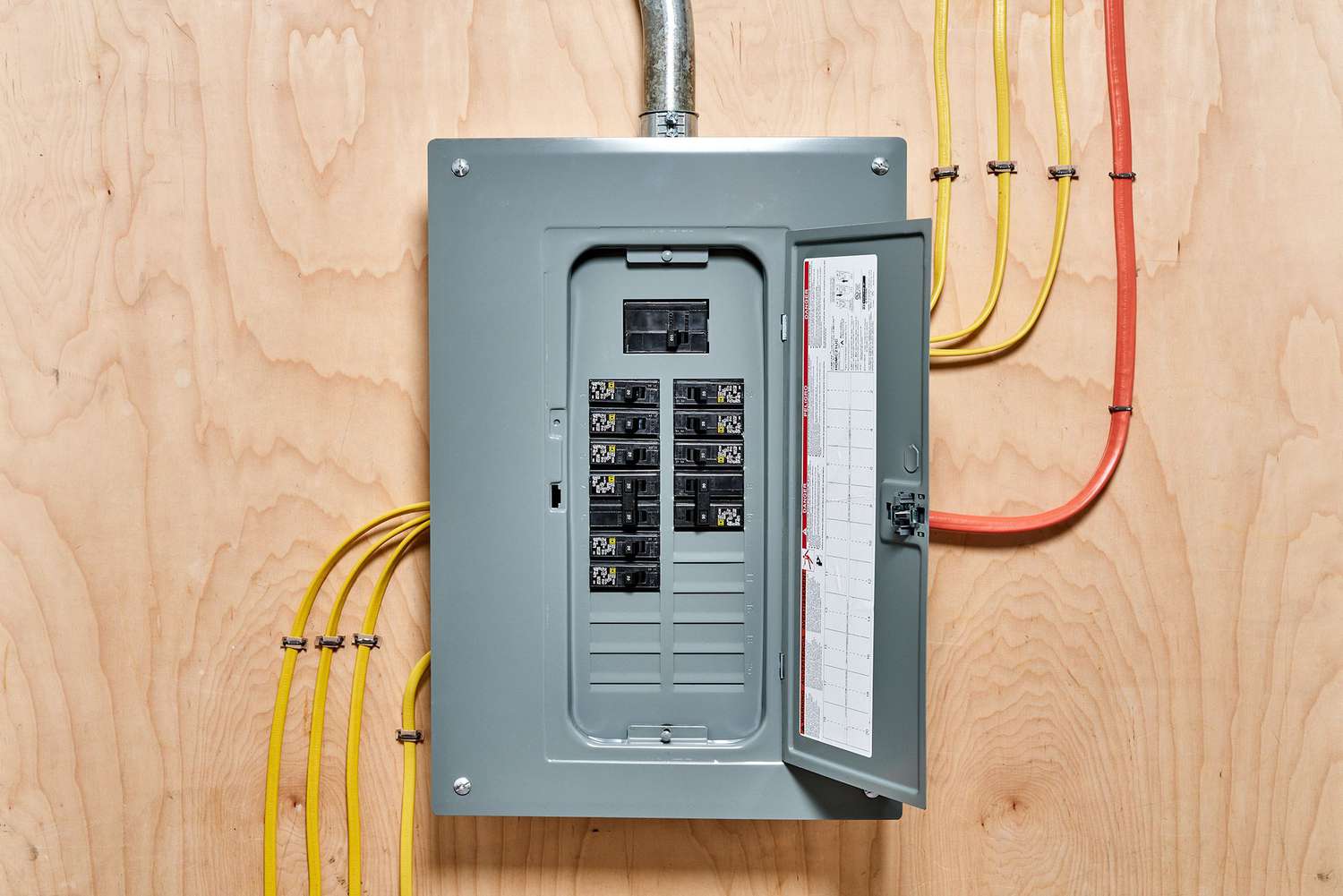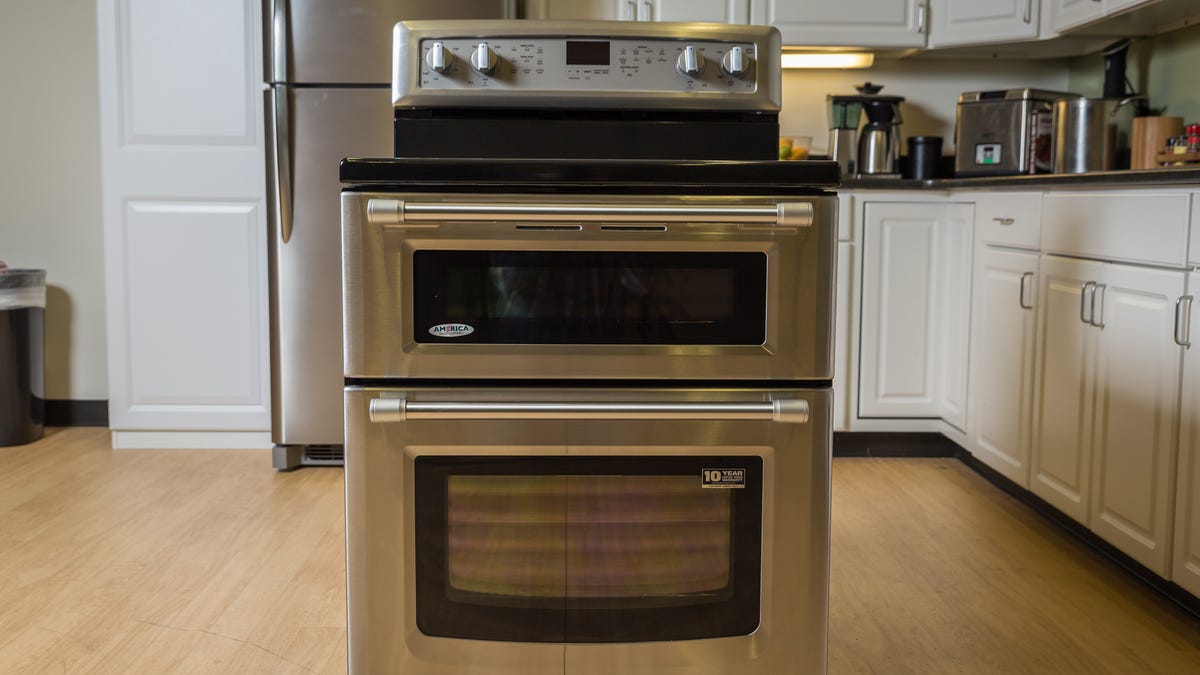

Articles
How To Calculate Your Home’s Electrical Load
Modified: December 7, 2023
Learn how to calculate your home's electrical load with our informative articles. Get insights and tips to ensure your electrical system is safe and efficient.
(Many of the links in this article redirect to a specific reviewed product. Your purchase of these products through affiliate links helps to generate commission for Storables.com, at no extra cost. Learn more)
Introduction
Welcome to the world of electrical load calculation! As a homeowner, understanding your home’s electrical load is crucial for safety and efficiency. When you plug in your devices, turn on your lights, or use your appliances, you are relying on the electrical system to handle the load gracefully. But how do you determine if your home’s electrical system can handle all the power demands? That’s where calculating the electrical load comes in.
The electrical load refers to the amount of power that the electrical system in your home can safely handle. It is measured in terms of voltage and amperage. Understanding the electrical load will not only help you ensure that your electrical system is up to code, but it will also prevent overloading, excessive energy consumption, and potential electrical hazards.
In this article, we will guide you through the process of calculating your home’s electrical load. From determining the voltage of your home to estimating the load of various appliances and lighting fixtures, we will cover all the essential steps. So let’s dive in and empower you with the knowledge to make informed decisions about your home’s electrical capacity.
Note: Before attempting any electrical calculations or modifications, it is always recommended to consult with a licensed electrician to ensure your safety and compliance with local electrical codes.
Key Takeaways:
- Understanding your home’s electrical load is crucial for safety and efficiency. Calculate the total load by summing up individual appliance, lighting, and additional electrical loads to ensure your electrical system can handle the demand.
- Consult a licensed electrician to ensure accuracy and safety when calculating your home’s electrical load. Understanding the power requirements empowers you to make informed decisions about energy usage and electrical system upgrades.
Read more: How To Fix E2 Error In A Washing Machine
Understanding Electrical Load
Before we dive into calculating your home’s electrical load, let’s start by understanding what electrical load actually means. Electrical load refers to the amount of power, measured in watts, that is consumed by the electrical devices and systems in your home.
Every electrical device has a specific power requirement, which is usually indicated on the device or in its manufacturer’s specifications. This power requirement is usually measured in watts or kilowatts. For example, a standard incandescent light bulb may have a power rating of 60 watts, while a refrigerator may have a power rating of 300 watts.
The total electrical load of your home is the sum of the power requirements of all the electrical devices and systems in use at any given time. This includes everything from appliances like refrigerators, ovens, and washing machines to lighting fixtures, heating and cooling systems, and even electronic devices like televisions and computers.
It’s important to note that different devices and systems in your home may have different voltage and amperage requirements. Voltage refers to the electrical potential difference that determines how electricity flows, while amperage refers to the amount of electrical current that flows through a circuit.
When calculating your home’s electrical load, you’ll need to consider both the voltage and amperage requirements of each device or system to ensure that your electrical system can safely handle the load.
Now that we have a basic understanding of electrical load, let’s move on to the next step: determining the voltage of your home.
Determining the Voltage of your Home
Before you can accurately calculate your home’s electrical load, it’s essential to determine the voltage of your electrical system. Most residential homes in the United States operate on a standard voltage of 120 volts or 240 volts.
To find out the voltage of your home’s electrical system, you can check the electrical panel or circuit breaker box. The main breaker or fuse will often indicate the voltage rating. It’s typically labeled as 120V/240V. This means that your home has a split-phase electrical service, with 120 volts available for regular household circuits and 240 volts for specific high-power appliances or systems.
In some cases, older homes or specialized installations may have a different voltage rating. It’s essential to confirm the voltage before proceeding with any electrical load calculations. If you are unsure about the voltage or need assistance, it’s wise to consult a licensed electrician to ensure accuracy and safety.
Once you have confirmed the voltage of your home, you are ready to move on to the next step: calculating the amperage for each appliance.
Calculating the Amperage for Each Appliance
Calculating the amperage, or electrical current, required for each appliance in your home is a crucial step in determining your electrical load. Amperage represents the rate at which electrical current flows through a circuit and is measured in amperes (amps).
To calculate the amperage for each appliance, you’ll need to know the power rating of the appliance in watts and the voltage of your home’s electrical system. The formula to calculate amperage is:
Amperage (A) = Power Rating (W) / Voltage (V)
Let’s take a refrigerator as an example. If the power rating of the refrigerator is 300 watts, and your home’s voltage is 120 volts, you can calculate the amperage as:
Amperage = 300 watts / 120 volts = 2.5 amps
So, the refrigerator requires an amperage of 2.5 amps when it is running.
Repeat this calculation for each appliance in your home, including kitchen appliances, laundry machines, televisions, computers, and any other electrical devices. Be sure to consider the power rating of each device and divide it by the voltage of your home to get the amperage.
Keep in mind that some appliances may have multiple power ratings, depending on their operating modes or settings. In such cases, consider the highest power rating to ensure that you account for the maximum potential load.
Once you have calculated the amperage for each appliance, you can move on to the next step: identifying the power consumption of your lighting fixtures.
Identifying the Power Consumption of Lighting Fixtures
Lighting fixtures play a significant role in your home’s electrical load, and it’s important to accurately determine their power consumption. Lighting fixtures include everything from ceiling lights, chandeliers, and pendant lights to lamps and outdoor lighting.
To identify the power consumption of your lighting fixtures, you need to check the wattage rating of each individual fixture. This information is usually found on the packaging, the fixture itself, or in the manufacturer’s specifications.
For example, let’s say you have a ceiling light with a wattage rating of 60 watts. If you have four of these lights installed in your home, you would calculate the total power consumption as:
Total Power Consumption = Wattage Rating x Number of Fixtures
Total Power Consumption = 60 watts x 4 = 240 watts
In this case, the total power consumption of your ceiling lights would be 240 watts.
Continue this process for each lighting fixture in your home, including both indoor and outdoor lights. Add up the power consumption of all the fixtures to get the total power consumption for your lighting load.
Remember that some fixtures may have different lighting modes, such as dimmable or adjustable brightness levels. In such cases, consider the highest power consumption when calculating the total load.
With the power consumption of your lighting fixtures determined, you can now move on to the next step: calculating the load of your heating and cooling systems.
Tip: To calculate your home’s electrical load, add up the wattage of all appliances and devices that will be running at the same time. Use this total to determine the size of your electrical panel and the capacity of your electrical system.
Determining the Load of Heating and Cooling Systems
Heating and cooling systems, such as HVAC (Heating, Ventilation, and Air Conditioning) units, have a significant impact on your home’s electrical load. It’s crucial to accurately determine their load to ensure that your electrical system can meet the demand.
To determine the load of your heating and cooling systems, you need to consider two main factors: the power consumption of the system and the duration of its operation.
Start by finding the power rating, usually measured in watts or kilowatts, of your heating and cooling units. This information can typically be found on the manufacturer’s label or in the product documentation. For example, let’s say your HVAC system has a power rating of 5,000 watts.
Next, estimate the average number of hours the heating or cooling system operates per day. This can vary depending on factors such as climate, season, and personal preference. For instance, if you run your HVAC system for 6 hours a day on average, you would have:
Daily Power Consumption = Power Rating x Number of Hours
Daily Power Consumption = 5,000 watts x 6 hours = 30,000 watt-hours (or 30 kilowatt-hours)
You can then use this daily power consumption to determine the monthly or yearly load by multiplying it by the number of days or months. This will give you a clearer idea of the impact your heating and cooling systems have on the overall electrical load of your home.
Keep in mind that some heating and cooling systems may have variable power consumption, especially if they have different operating modes or settings. In such cases, consider the highest power consumption to ensure that you account for the maximum load.
With the load of your heating and cooling systems determined, you can now move on to estimating the load of your major appliances.
Estimating the Load of Major Appliances
Major appliances, such as refrigerators, ovens, washing machines, and dryers, contribute significantly to your home’s electrical load. Estimating their load is crucial for understanding the overall power consumption in your household.
To estimate the load of major appliances, you’ll need to consider their power ratings and the average duration of their operation. The power rating, measured in watts or kilowatts, indicates the amount of power the appliance consumes while in use. This information can usually be found on the appliance itself or in its manufacturer’s specifications.
For example, let’s say you have a washing machine with a power rating of 1,500 watts and you use it for an average of 2 hours per week. To estimate the weekly load of the washing machine, you would calculate:
Weekly Load = Power Rating x Hours of Operation
Weekly Load = 1,500 watts x 2 hours = 3,000 watt-hours (or 3 kilowatt-hours)
Repeat this estimation for each major appliance in your home, including refrigerators, ovens, dishwashers, and any other appliances that are essential to your daily routine.
Keep in mind that the estimated load may vary depending on how often you use the appliances and the specific settings you choose. It’s best to take into account the highest power consumption to ensure that your electrical system can handle the maximum load.
By estimating the load of your major appliances, you’ll have a better understanding of the power requirements in your home and how they contribute to your overall electrical load. Now, let’s move on to the next step: factoring in any additional electrical load.
Factoring in Additional Electrical Load
In addition to the load from appliances, lighting fixtures, and heating/cooling systems, there may be other sources of electrical load in your home that must be factored in. These additional loads can include electronic devices, entertainment systems, small appliances, and any other electrical equipment that you use on a regular basis.
To accurately factor in the additional electrical load, it’s important to identify all the devices and equipment that contribute to it. This can be done by making a comprehensive list of all the electrical devices that are plugged in and used in your home. Be sure to consider devices such as televisions, computers, routers, gaming consoles, chargers, and any other electronics.
For each device, check its power rating in watts or kilowatts. This information is typically provided on the device itself or in the user manual. Add up the power ratings of all the devices to determine the additional electrical load.
For example, if you have a television with a power rating of 200 watts, a computer with a power rating of 250 watts, and a gaming console with a power rating of 150 watts, the additional load would be:
Additional Load = Power Rating of Television + Power Rating of Computer + Power Rating of Gaming Console
Additional Load = 200 watts + 250 watts + 150 watts = 600 watts
In this case, the additional electrical load from these electronic devices would be 600 watts.
It’s important to note that the additional load can vary depending on how many devices are in use simultaneously and for how long. To account for potential variations, it may be helpful to add a safety margin to ensure that your electrical system can handle the total load effectively.
Now that you have factored in the additional electrical load, we can move on to the final step: summing up the total electrical load of your home.
Summing up the Total Electrical Load
Now that you have calculated or estimated the load of each component in your home, it’s time to add them up to determine the total electrical load. By summing up the individual loads, you’ll have a clear picture of the power requirements of your home’s electrical system.
Start by adding together the loads of all the appliances you calculated earlier. Include major appliances, such as refrigerators, ovens, washing machines, and dryers, as well as any other electrical devices you identified as contributing to the load.
Next, add the power consumption of your lighting fixtures. Include both indoor and outdoor fixtures and consider the total power consumption you calculated for them.
Factor in the load of your heating and cooling systems, including HVAC units or any other systems used for temperature control in your home. Add up their power consumption based on the power ratings and average duration of operation.
Include the additional electrical load from electronic devices, entertainment systems, and other small appliances that you identified earlier. Sum up their power ratings to determine the total additional load.
Once you have gathered all the individual loads, simply add them together to find the total electrical load of your home.
It’s important to compare this total load with the capacity of your home’s electrical system to ensure it can handle the demand. Most residential electrical systems are designed to accommodate a specific load, often measured in amperes or kilowatts. If the total load exceeds the capacity of your electrical system, you may need to consider upgrading your system or redistributing the load to prevent overloading.
Remember, when it comes to electrical load calculations, it’s always a good idea to consult with a licensed electrician who can assess your specific situation and provide professional guidance. They will ensure that the calculations are accurate and that your electrical system is safe and up to code.
By summing up the total electrical load of your home, you’ll have a better understanding of the power requirements and capacity of your electrical system. This knowledge will help you make informed decisions about energy use, electrical upgrades, and ensure the safety and efficiency of your home’s electrical infrastructure.
Conclusion
Calculating your home’s electrical load is a crucial step in ensuring the safety, efficiency, and functionality of your electrical system. By understanding the power requirements of your appliances, lighting fixtures, heating and cooling systems, and additional electrical load, you can make informed decisions about energy usage and prevent overloading.
Throughout this article, we discussed the various steps involved in calculating your home’s electrical load. From determining the voltage of your home’s electrical system to estimating the load of major appliances, lighting fixtures, and heating/cooling systems, each step plays a significant role in understanding the overall power consumption in your household.
By accurately calculating the load, you can identify any potential issues, such as overloaded circuits or inadequate electrical system capacity. This knowledge empowers you to make necessary adjustments, such as redistributing loads, upgrading your electrical system, or implementing energy-saving measures to optimize the efficiency of your home’s electrical usage.
However, it’s important to note that electrical work should always be done by a qualified professional. If you have any doubts or concerns about your home’s electrical system or load calculation process, it is recommended to consult with a licensed electrician who can provide expert guidance and ensure your safety and compliance with local electrical codes.
Remember, prioritizing electrical safety is crucial. Regularly inspect your electrical system, follow best practices for usage, and never hesitate to seek professional help when needed.
By understanding and calculating your home’s electrical load, you are taking a proactive approach towards efficient energy use and ensuring the reliability and safety of your electrical system. With the knowledge gained from this article, you can confidently navigate the complexities of electrical load calculation and make well-informed decisions that benefit both you and your home.
Frequently Asked Questions about How To Calculate Your Home’s Electrical Load
Was this page helpful?
At Storables.com, we guarantee accurate and reliable information. Our content, validated by Expert Board Contributors, is crafted following stringent Editorial Policies. We're committed to providing you with well-researched, expert-backed insights for all your informational needs.














0 thoughts on “How To Calculate Your Home’s Electrical Load”